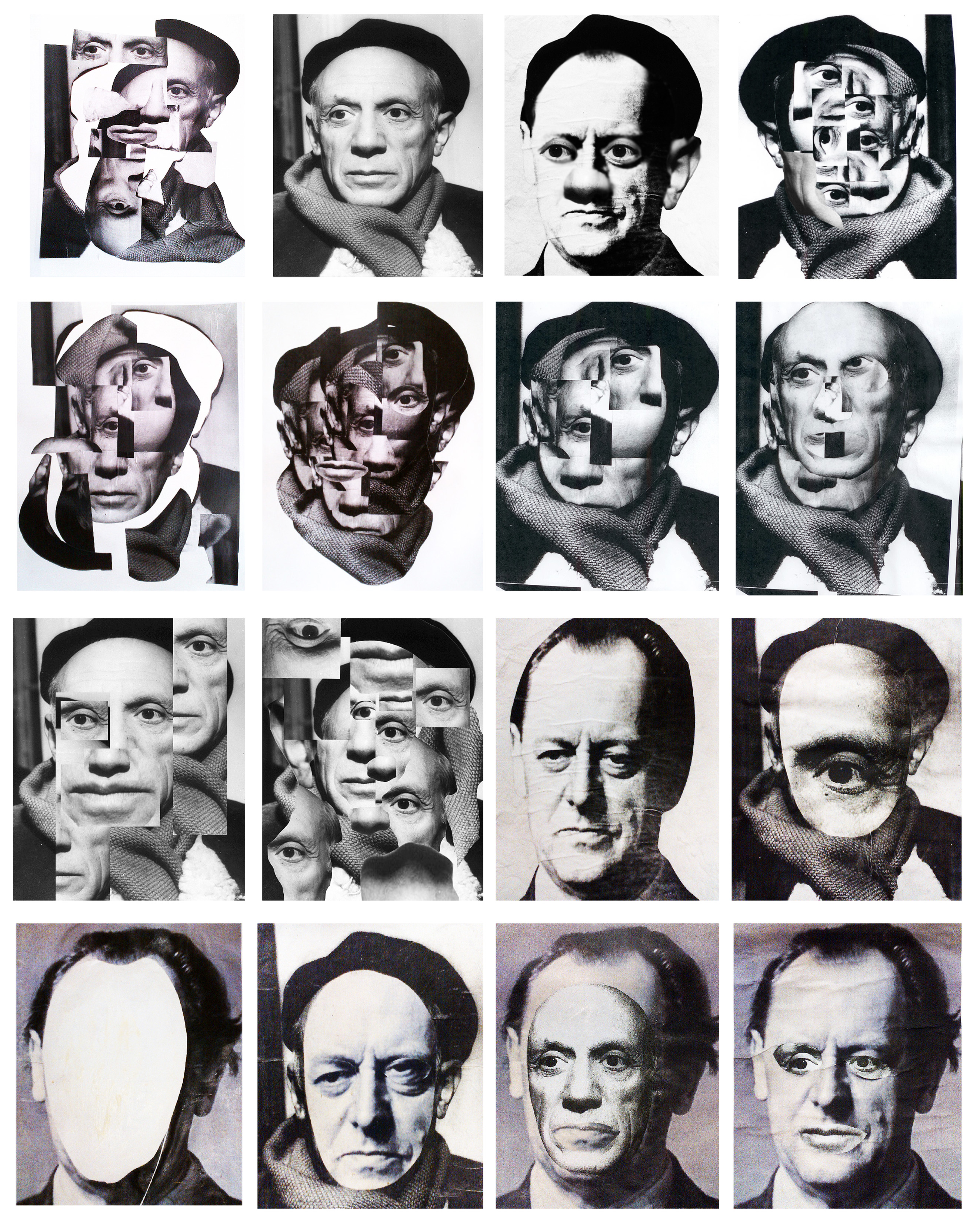Rhymes Research
-Dadaism –
Dada or Dadaism was born as a response to World War 1 and it’s perceived causes. Influenced by a couple of movements such as Cubism and Constructivism, Dada is known to be difficult to define and is debated between the Dadaists themselves. Visually, Dada is often, but not limited to, an amalgamation of objects or visuals achieved through ‘photomontages’ (images),
‘assemblage’ (everyday objects, more 3-dimentional), and collage (flatter objects, eg. tickets, maps and wrappers). The mindset behind Dadaism, was against the conforming and unquestioning behavior of society as well as the corruption and nationalization prevalent at the time.
Interestingly enough, Dadaism, in trying to be so counter-culture or anti-art, some Dadaists’ themselves are heard saying,
“Dada is anti-Dada”
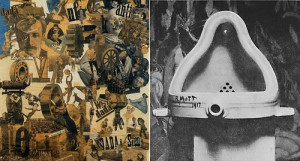
Examples of Dadaist Art, “Cut with the Kitchen Knife Dada Through the Last Weimar Beer-Belly Cultural Epoch in Germany” + “Fountain”
These days, the classification of Dada still seems to pop up, living on in similar mindsets of the more unconventional individuals. One of my favorite bands was considered to originate as a ‘Dadaist Thrash Punk’ group, which I found pretty interesting, the aspect of music being classified as Dada.
– Constructivism –
Probably one of the most recognizable art styles to come out of Russia, Constructivism was an Art and Architectural movement that appeared around the year 1919. Similar to Dadaism, it came about because of World War 1. Their aims were to break the autonomy of the art they were surrounded by at the time, they wanted art that would bring stir thoughts of social change or that would serve a social purpose, pushing towards a utopic community.
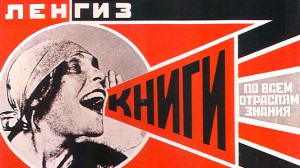
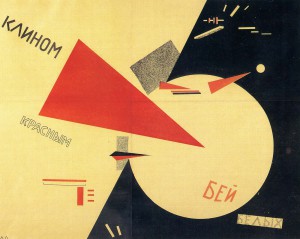
Some of the style of Constructivism came though the artists want to display the properties of materials. With a focus on functionality and “truth to materials”, Constructivism has a very industrial vibe to it. Geometric, bold, bright and striking. The reach and influence of Constructivism is still prevalent today in graphic design and architecture. Most famously, Shepard Fairey, most well known for his Andre the Giant ‘Obey’ graphic, as well as his ‘Hope’ poster of Obama.
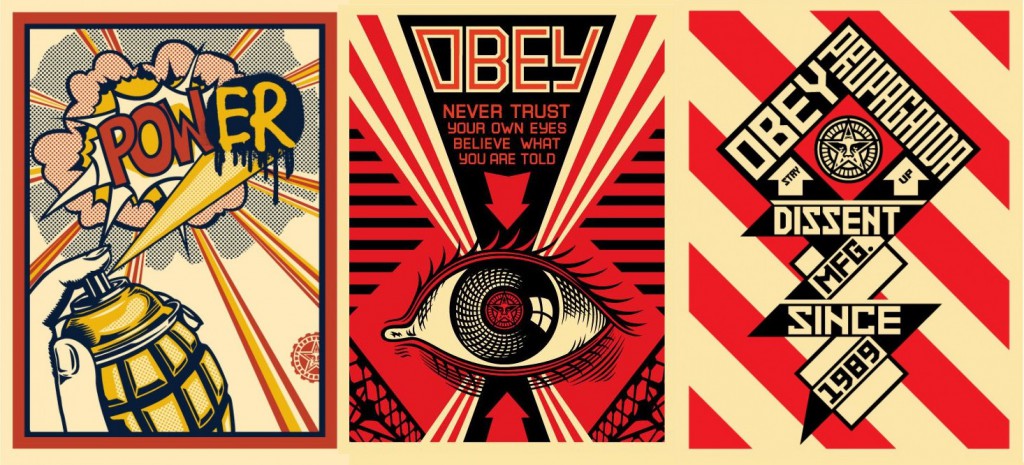
I have always been fond of the visuals of Communist Propaganda posters in their strong, stylized look, and I would hopefully like to see if I can bring some of that vibe into some of my poem squares.
– Hannah Höch –
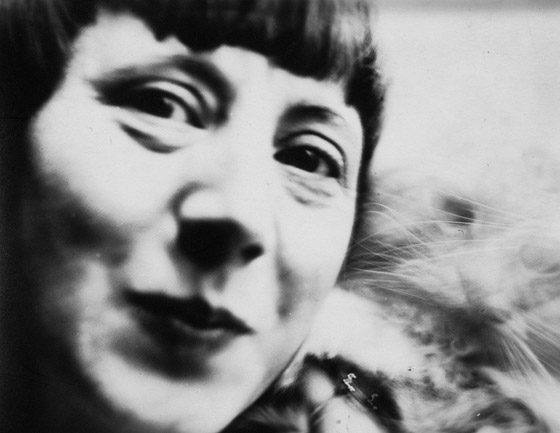
Hannah Höch was a Dadaist artist from Germany. She is known to be one of the people whom photomontage emerged from. Using clippings from mass media (such as magazines and newspapers), Höch, through her art brought up issues about race, gender, and even about the Berlin Dada group themselves.
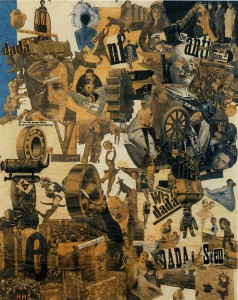
“Cut with the Kitchen Knife Dada Through the Last Weimar Beer-Belly Cultural Epoch in Germany”
She preferred metaphorical representations of her message. For example in one of her most famous photomontages, “Cut With the Kitchen Knife Dada Through the Last Weimar Beer-Belly Cultural Epoch of Germany”, there’s a small map in the lower right corner, showing the European countries which woman could vote in. I really like, that while at first glance to the uninformed viewer, it would seem to be a mess of figures and objects, she actually had a message and purpose for the pieces. She even stuck a little picture of her face on the corner of the map instead of signing it.
– El Lissitzky –

El Lissitzky
El Lissitzky, a Russian multidisciplinarian (artist, photographer, architect, etc.), was a large influence on the Constructivism art movement. He was known to work for the Soviet Union designing propaganda (though not solely).
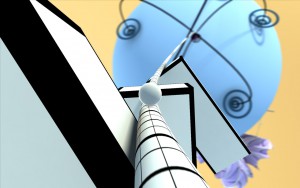
Proun – The Game
He developed a style with abstract geometric shapes which he called “Proun”. Which happens to be a name of a game. It’s aesthetic and name’s influence now make sense to me.

Proun – The Visual Style
Proun had an emphasis on simplifying 3D shapes of various perspectives.
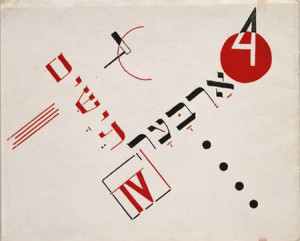
Book cover for Chad Gadya by El Lissitzky
His influence on graphic design is prevalent till today in the way he utilized colour, basic forms and text. I personally am fascinated by the way these objects, arranged purposefully can bring about a certain vibe to the image.
– My Rhyme –
I’m still deciding between an Edward Gorey series of poems or a H.P Lovecraft poem.
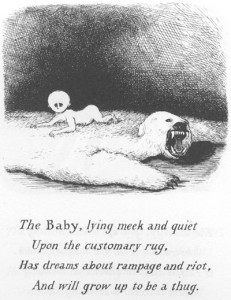
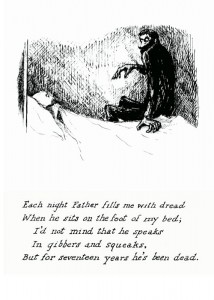
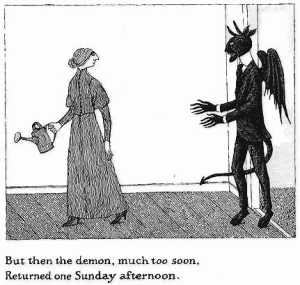
These are just a few examples of some Edward Gorey poems. I like them cause they’re kinda humorous and seem child-like in their presentation whilst having more sinister undertones that I could possibly play around with in the assignment.
H.P Lovecraft poems:
Yule Horror
There is snow on the ground,
And the valleys are cold,
And a midnight profound
Blackly squats o’er the wold;
But a light on the hilltops half-seen hints of feastings un-hallowed and old.
There is death in the clouds,
There is fear in the night,
For the dead in their shrouds
Hail the sin’s turning flight.
And chant wild in the woods as they dance round a Yule- altar fungous and white.
To no gale of Earth’s kind
Sways the forest of oak,
Where the sick boughs entwined
By mad mistletoes choke,
For these pow’rs are the pow’rs of the dark, from the graves of the lost Druid-folk.
Hallowe’en in a Suburb
The steeples are white in the wild moonlight,
And the trees have a silver glare;
Past the chimneys high see the vampires fly,
And the harpies of upper air,
That flutter and laugh and stare.
For the village dead to the moon outspread
Never shone in the sunset’s gleam,
But grew out of the deep that the dead years keep
Where the rivers of madness stream
Down the gulfs to a pit of dream.
A chill wind blows through the rows of sheaves
In the meadows that shimmer pale,
And comes to twine where the headstones shine
And the ghouls of the churchyard wail
For harvests that fly and fail.
Not a breath of the strange grey gods of change
That tore from the past its own
Can quicken this hour, when a spectral power
Spreads sleep o’er the cosmic throne,
And looses the vast unknown.
So here again stretch the vale and plain
That moons long-forgotten saw,
And the dead leap gay in the pallid ray,
Sprung out of the tomb’s black maw
To shake all the world with awe.
And all that the morn shall greet forlorn,
The ugliness and the pest
Of rows where thick rise the stones and brick,
Shall some day be with the rest,
And brood with the shades unblest.
Then wild in the dark let the lemurs bark,
And the leprous spires ascend;
For new and old alike in the fold
Of horror and death are penned,
For the hounds of Time to rend.
I chose these Lovecraft poems cause I like because they conjure up a dark atmosphere in the mind of the reader, and it’s potency for imagery is what draws me to them.
I’m not sure which one would be better for the assignments purposes, one with more descriptive imagery or one with a series of simple short poems. Both of which I feel I could play around with various aspects.
Dadaism and Constructivism, along with the two aforementioned artists, have stirred up some ideas in my mind to dabble with purposeful placements to invoke stronger reactions to the images, as well as personal quips I could toss in à-la Hannah Höch. Representations of materials or textures, from Constructivism, could come into use to add depth to the pieces as well.







 Prior to the assignment, we were asked to research on some artists. I chose Franz Kline as his artwork was the sort of Abstract art I grew up disliking cause I didn’t understand why it was so highly prized. For me, understanding the mindset and thoughts of the artist, helps me understand their artwork, and this was the perfect opportunity to do so.
Prior to the assignment, we were asked to research on some artists. I chose Franz Kline as his artwork was the sort of Abstract art I grew up disliking cause I didn’t understand why it was so highly prized. For me, understanding the mindset and thoughts of the artist, helps me understand their artwork, and this was the perfect opportunity to do so.














































